Experience the flawless fusion of the vast Gobi Desert and exploration of Mongolia’s most historic sites, immersing yourself in the genuine culture of nomadic people who inhabit the grasslands.
The Gobi Desert emerges as a prime destination for travelers to Mongolia, showcasing extensive steppe and rugged mountain ranges. This expedition highlights pivotal aspects of the desert, including the Yol Valley, Khongor sand dunes, and the renowned Flaming Cliffs. Furthermore, you’ll have the chance to encounter local camel breeders and traverse the desert terrain on camelback.
The latter segment of the journey transports you to the expansive and picturesque Orkhon Valley, where you’ll uncover breathtaking landscapes and encounter genuine nomadic communities, gaining insights into their traditional way of life and celebrate authentic “Naadam Festival” with local nomads. Additionally, you’ll delve into the remnants of the ancient Mongol Empire’s capital and explore historically significant monasteries.

We’ll be there to welcome you at the airport upon your arrival. “Chinggis Khan International Airport” is situated 50 kilometers from downtown, and the drive to the city typically takes about an hour. The evening rush hour tends to be busy, so if you have an evening flight, expect a three-hour drive to the hotel. For morning or early arrivals, we recommend exploring some places before checking in. We’ll also arrange lunch and dinners at the most beautiful and traditional restaurants.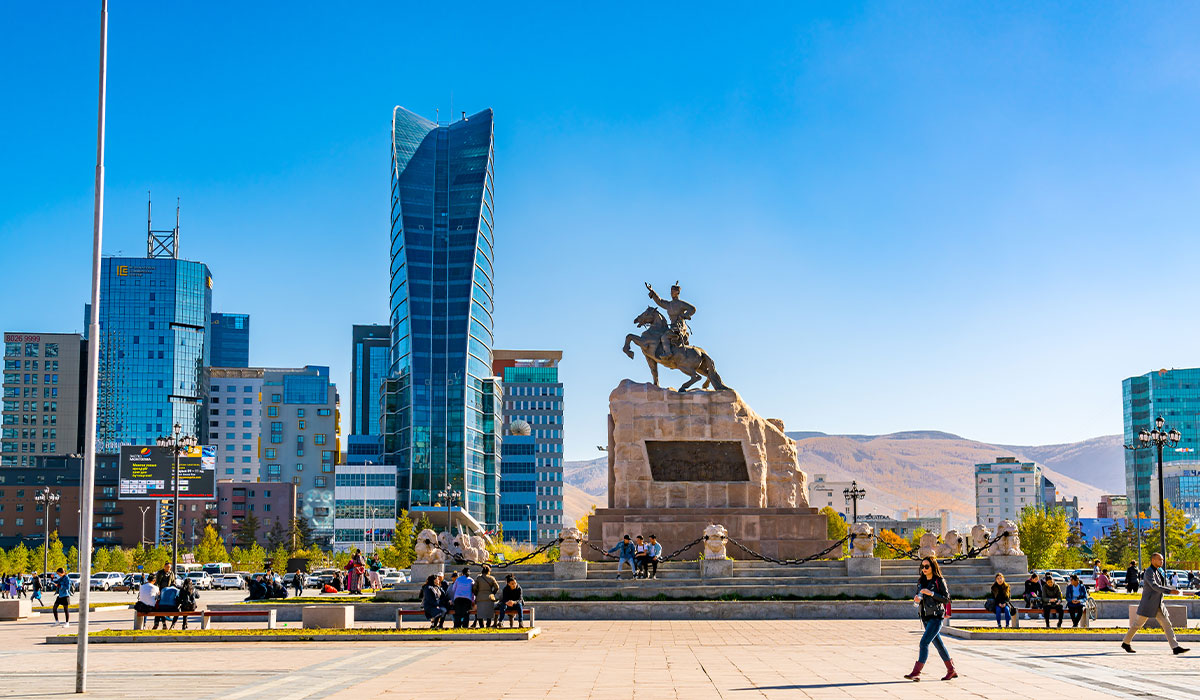
We’ll pick you up from your accommodation and drive directly to the “White Stupa”, a journey of about 5–6 hours. Once part of the ancient seafloor, this stunning escarpment resembles a white stupa, giving it the name “Tsagaan Suvarga” (White Stupa). Stretching 400 meters in length and towering 60 meters with a sheer, 90-degree cliff face, it’s a breathtaking sight. After rainfall, water cascades down the cliffs, resembling a massive waterfall and transforming the surface into something akin to the landscape of Mars. It’s the perfect setting for a leisurely stroll, capturing stunning photos—including drone shots. We’ll arrive at the White Stupa before sunset, giving us the opportunity to photograph its incredible colors during golden hour. The vivid hues of the cliffs create a surreal, otherworldly atmosphere, making for truly spectacular images. Overnight in Mongolian “Ger” tourist camp with hot shower and toilet.(B/L/D)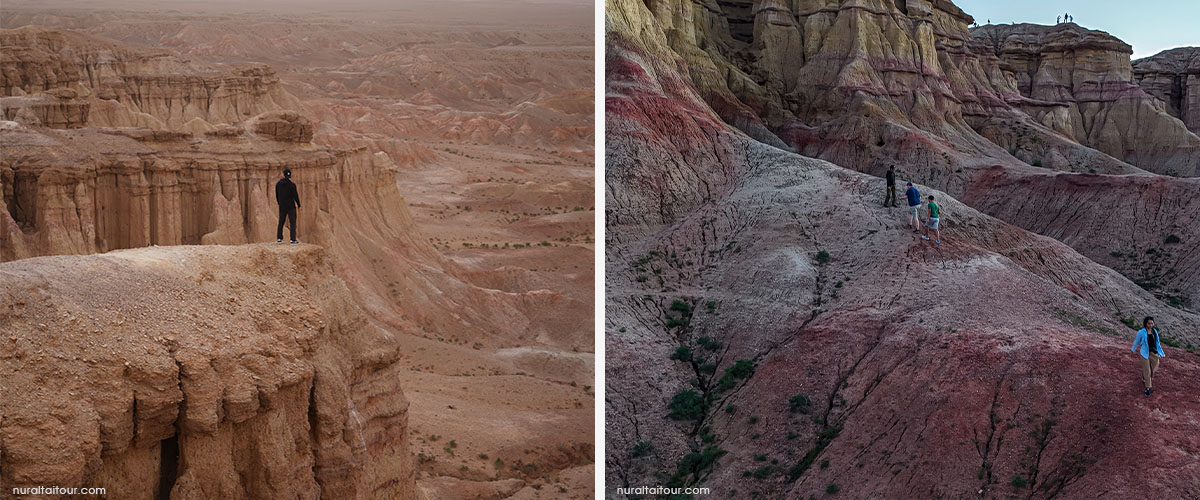
You’ll head to the “Yol Valley“, also known as “Lammergeier Valley”, in the “Gobi Gurvan Saikhan Mountain National Park” /Three Beauties of the Gobi/ for about 3-4 hours. This valley is a beautiful spot nestled in the Gobi desert, with thick ice almost year-round. The cliffs are incredibly high, blocking much of the sunlight, which helps the snow to stick around even in the summer. If you visit before August, you’ll encounter a glacier among the rocky cliffs as you ascend towards the ravine. Exploring the valley usually takes around 2-3 hours. For the remainder of the day, you can relax at the Mongolian Ger tourist camp, where you’ll have access to a hot shower. All the Gers are equipped with comfy mattresses and crisp white blankets.(B/L/D)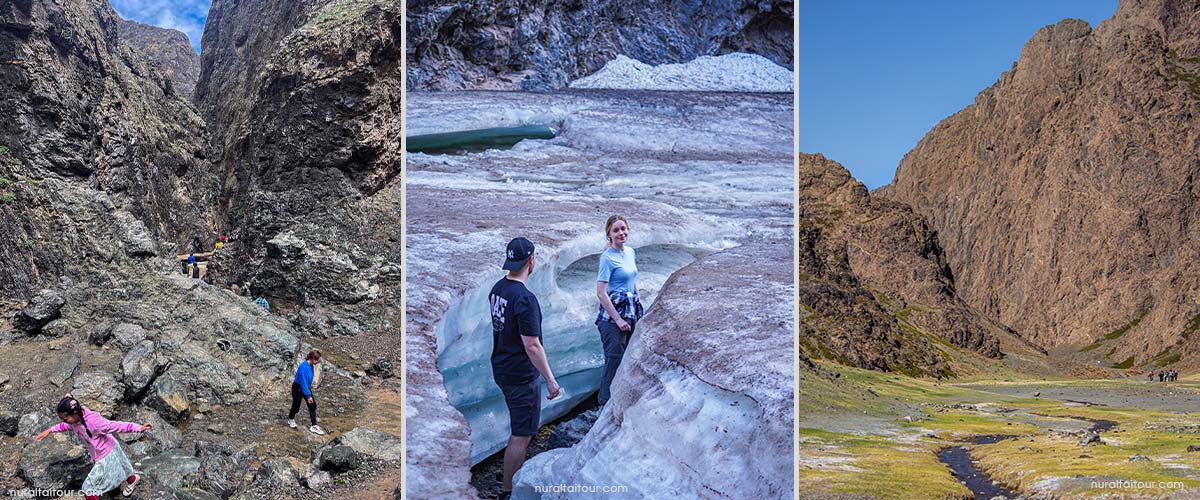
Embark on a journey to “Khongoryn Els“, the largest sand dune in Mongolia, towering up to 300 meters high. The drive covers about 200 kilometers, taking roughly 4 to 5 hours to reach the destination. We’ll visit a local camel herder family, where we’ll also experience riding Mongolian Bactrian camels. As your first experience of Gobi, you’ll explore the Khongor sand dune on the camelback. The dual-humped Bactrian camels offer a smooth riding experience due to their leisurely and gentle pace and our camel guide ensuring a safe journey through the sandy terrain. We’ll also get to discover the beauty of the “Seruun-Bulag” oasis nestled amidst the dunes. One of the highlights of the Khongor sand dune is climbing Duut Mankhan, also known as “Sounding Dunes”, for the sunset. It’s very challenging but quite safe. Climbing up is a blast, as the dune’s steep slope makes your feet slip with each step. Once you reach the summit, you’ll be treated to a breathtaking view of nature, with unusual vibrant hues of the setting sun. It’s typical for cloud cover in the desert to be sparse, which keeps the sky clean. This gives you a chance to gaze at the countless stars that adorn the night sky. Overnight at the tourist camp with a hot shower, white blankets.(B/L/D)
We’ll drive approximately 160 km distance for about 4 hours and arrive in “Bayanzag” which is a famous archaeological site with its rich fossil finds, including dinosaur eggs and skeletons, which provide valuable insights into prehistoric life. Its history is deeply connected with paleontological discoveries made by American paleontologist Roy Chapman Andrews in the early 20th century. You’ll wander through the terrain where dinosaurs once roamed, observing saksaul trees and other typical desert vegetation. The region is also famously known as Flaming Cliffs. The Flaming Cliffs are named for the vibrant red and orange tones that light up the landscape during sunrise and sunset, forming a breathtaking visual display. Overnight at the tourist camp with a hot shower, and white blankets.(B/L/D)
We’ll depart from the Gobi to reach the “Ongi Temple” ruins, which once stood as one of Mongolia’s largest monasteries, hosting over 1000 monks at its peak. Unfortunately, many sections of the Ongi monastery were completely demolished in 1939 during anti-religious purges. Given the considerable distance between Kharkhorin and the Flaming Cliffs, attempting it in a single day would entail a very long drive. Therefore, you’ll spend the night relaxing at the Ongi temple ruins. Take a leisurely evening stroll through the area and spend the night at a lovely tourist camp.(B/L/D)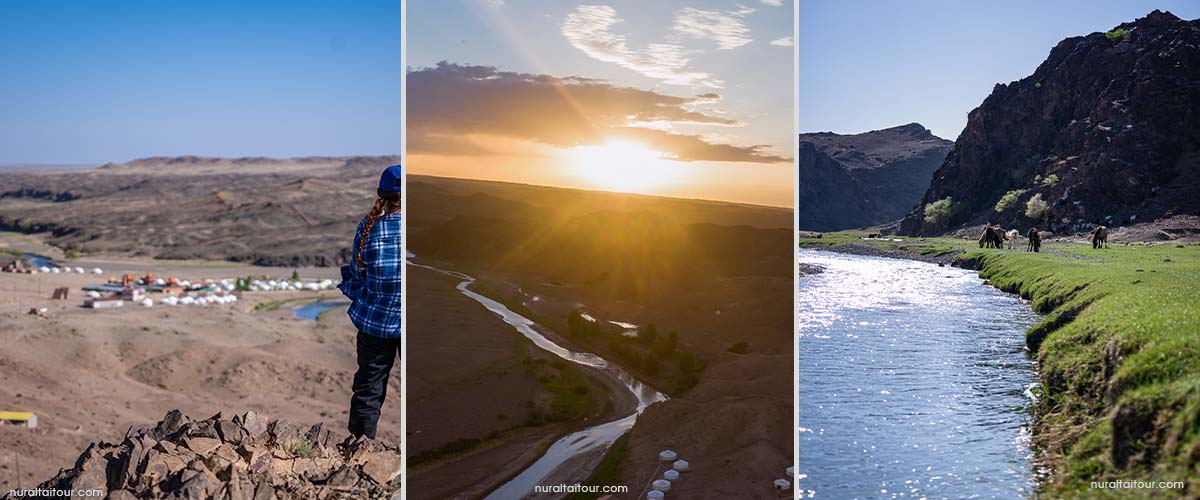
An unforgettable journey to the vast and flat wonderland of the “Orkhon Valley” is a true highlight of any visit to Mongolia. We’ll venture to the Orkhon waterfall, also known as “Ulaan – Tsutgalan“, one of the most beautiful sights in the area. Formed by volcanic eruptions approximately 20,000 years ago, the waterfall cascades from a 20-meter canyon. About 25 meters downstream from the falls, you can hike down to the bottom of the gorge, which is very scenic and dotted with pine trees. Overnight at the tourist camp.(B/L/D)
We’ll move to the heart of “Orkhon valley” to meet a local nomadic family to experience their daily lifestyle. The drive will take around 2-3 hours from Orkhon waterfall to family and we will arrive at the Mongolian nomadic family’s dwelling. We will be greeted with warm hospitality, and in accordance with Mongolian tradition, enter their ger. They will extend their kindness and offer food. During this time, we will acquaint ourselves with the family members. Furthermore, you’ll get involved in the cultures. Our English-speaking tour guide will facilitate communication between you and the local inhabitants. You will learn about the unusual nomadic lifestyle, how nomads spend their days, and how they keep their traditions, and culture even in the present period. Generally, nomads are hardworking people, and daily tasks doing like processing milk products, milk livestock, cleaning cattle sheds, searching for high-productivity of pastures, and so on. One of the interesting jobs in processing dairy products from a mare called Airag. Fermented horse milk is a traditional beverage, well-known in central Mongolia since it is a little more familiar than other areas. Every two hours, a mare is milked by a herder, who also confines or separates the foals. For nomadic families, using a lasso to catch foals is considered one of the most interesting activities. Furthermore, there are other activities to perform to fence cattle off at night when milking cows, the next morning. It will be the best experience when you participate in it. Traditional homemade dairy products will be instructed by the family members. Visitors will pay attention and have a chance to experience impersonally milking yak, processing milk, fermenting horse milk, making dried curd, and yak skim as well. Furthermore, there will be a mini-tournament to test your skill against locals and fellow travelers once a pre-start Khalkha archery course is given, one of Mongolia’s traditional sports. After lunch, transporting drinking water from two to three kilometers away on the mini truck can be fun. Due to extreme weather causing climate change and drought reducing the power and endurance of both wild and farmed animals, the use of motorcycles in nomadic herding has increased instead in recent years. To feel adventurous, you can also sit behind the motorcycle and ride around the middle Mongolian plateau like the wind while herding cattle from the foothills of the mountains. As mentioned above, adults process milk products while preparing dinner, while kids spend every evening playing knuckle-bone, horse racing, and other traditional games to have fun. After that, we gather in a circle for a conversation over a cool beverage, Airag, and traditional games. Dinner and Overnight with nomadic family.(B/L/D)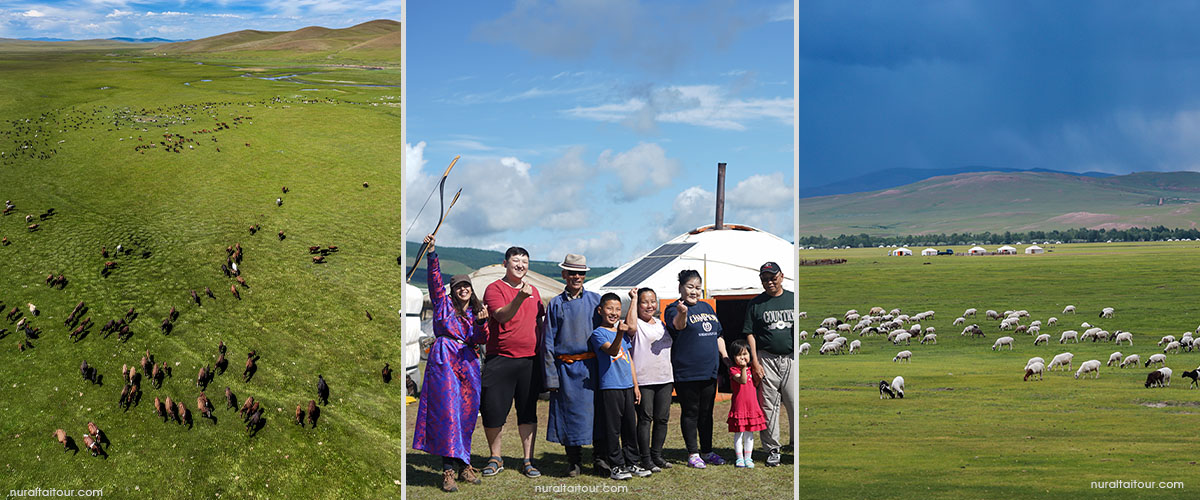
We’ll journey to the picturesque “Tuvkhun Temple” at the mountaintop by riding horses through a stunning forested area, immersing ourselves in the serene atmosphere. We’ll arrive at a small open meadow in front of a towering rocky cliff. As we get closer to the mountaintop, the terrain becomes a bit steeper. The monastery sits on that cliff, so we’ll ascend to it using rocky steps. On the way, you’ll encounter three small temples. While exploring the monastery, you’ll come across various meditation caves and a small cave known as the “mother’s womb.” Local beliefs suggest that rolling in the womb can cleanse your body, much like being reborn. At the mountaintop, you’ll also find several ovoos and monuments dedicated to natural deities. This experience is definitely worth a try, as it offers a breathtaking display of nature from the mountaintop. Afterward, we’ll return to the family. Overnight.(B/L/D)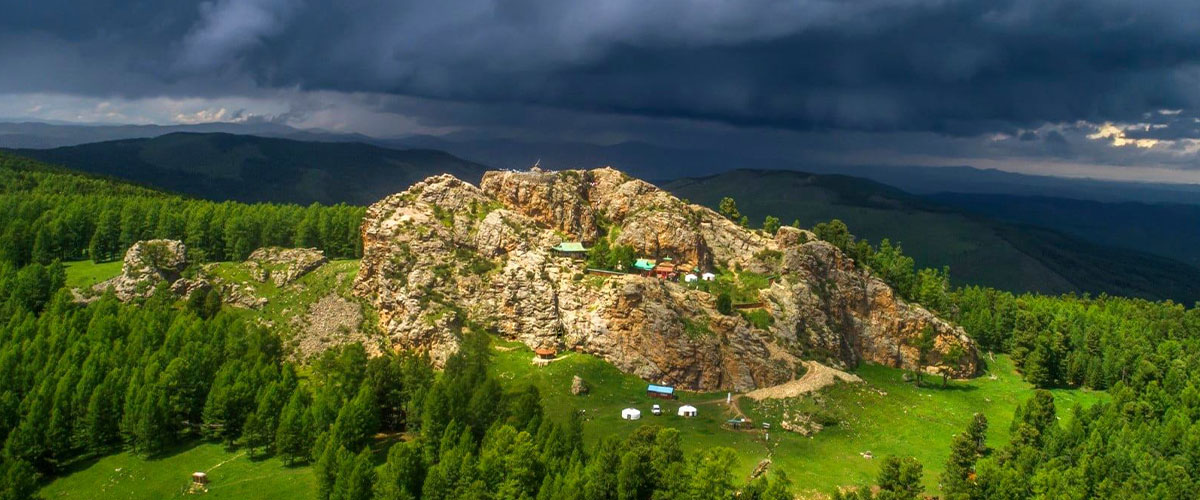
In the morning, we’ll drive for about an hour to the place where “Naadam Festival” is held. The authentic “Naadam Festival” in the Mongolian countryside offers a unique, traditional experience compared to the larger, urban celebrations in Ulaanbaatar. This smaller-scale event typically occurs in local communities, preserving the festival’s essence as a celebration of Mongolian culture and heritage. 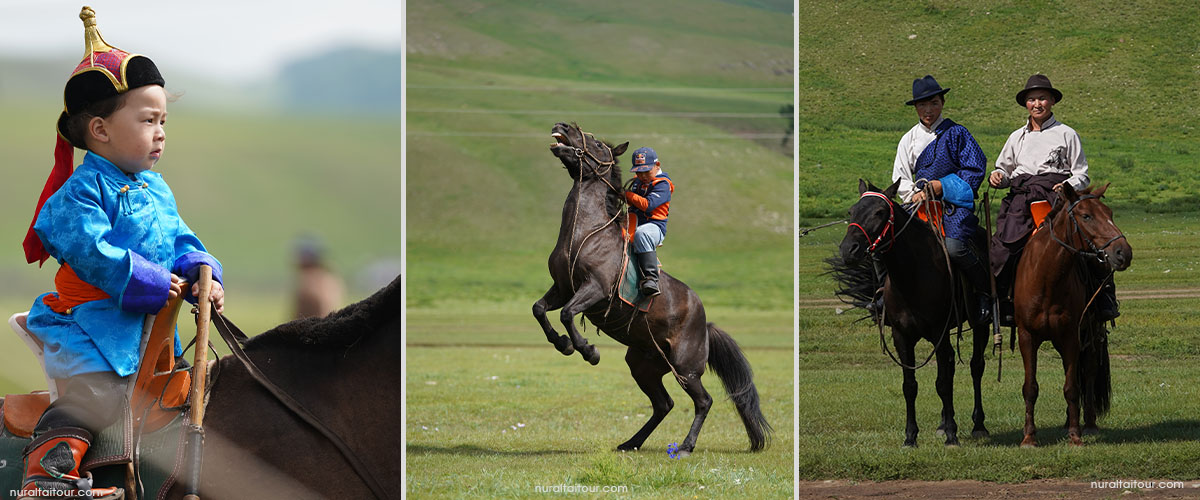 All the photos captured by Nurmukhamed Battur
All the photos captured by Nurmukhamed Battur
The Three Manly Games; The festival features “traditional wrestling”, “horse racing”, and “archery”, showcasing skills deeply rooted in Mongolia’s nomadic traditions.
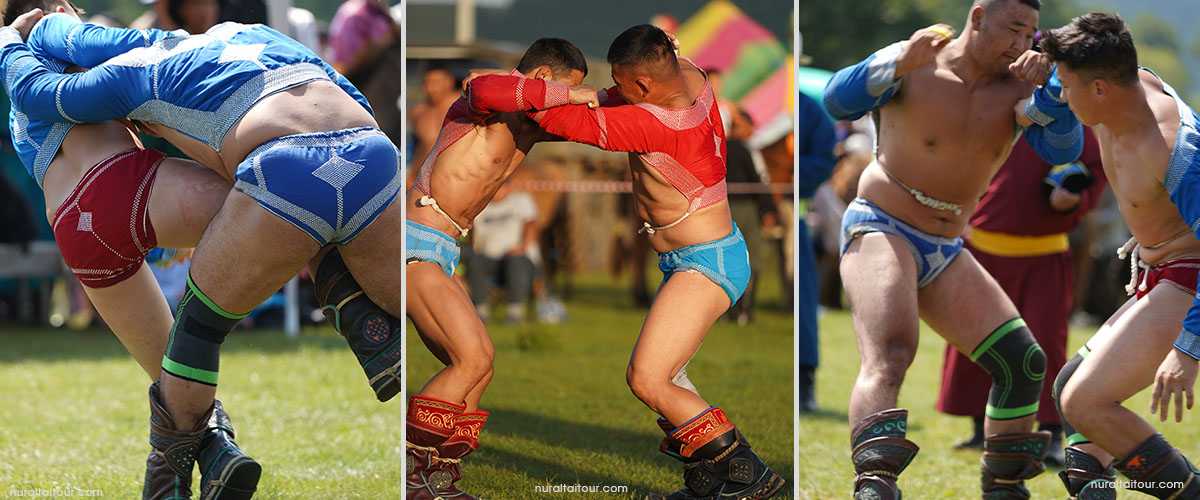
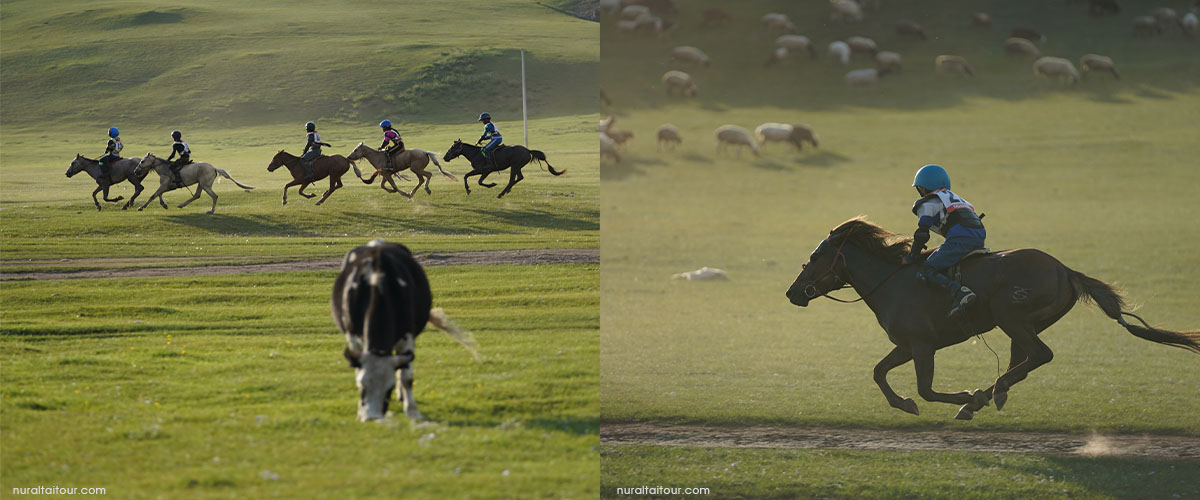
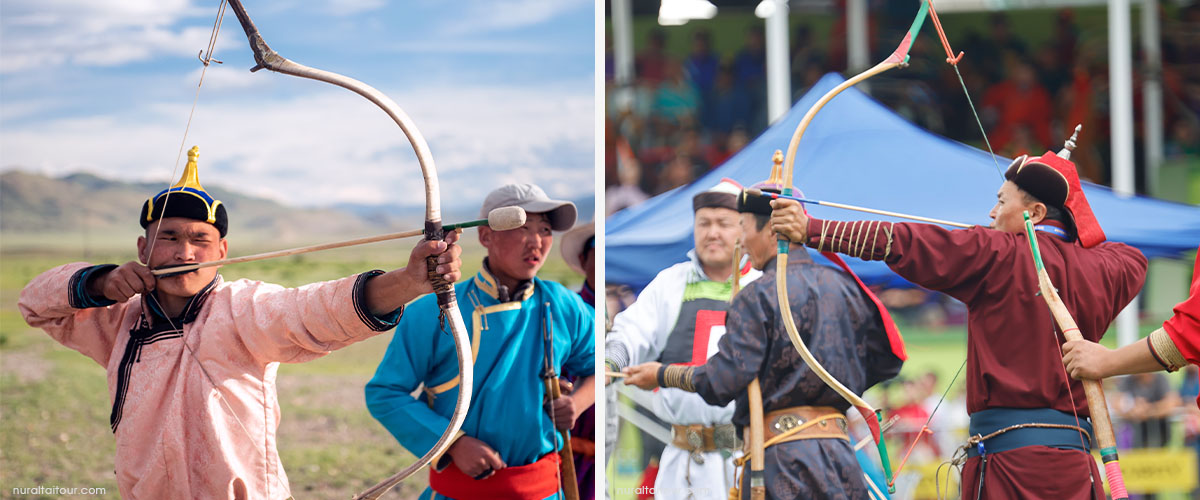
“Cultural Immersion”; Guests can enjoy local music, throat singing, traditional dance performances, and Mongolian cuisine such as “Khorkhog” (meat cooked with hot stones) and “Buuz” (dumplings), “Khuushuur”, “Tsuivan” etc..
Villagers and herders come together, creating a close-knit, festive environment that’s welcoming to visitors. You’re going to have a fantastic day of your life. Arrive in the family, overnight.(B/L/D)
We’ll arrive in the “Tsenher Hot Springs” after 2 hours of drive. “Tsenher Hot Springs**, located in the heart of Mongolia’s “Arkhangai” province, offers a rejuvenating experience amidst stunning natural landscapes. It is renowned for its therapeutic hot mineral waters, which flow from the ground at around 86°C (187°F). These springs are believed to have healing properties for joint pain, arthritis, and skin conditions. You can soak in outdoor pools or private bathhouses, surrounded by lush forests and rolling hills. Overnight at the Ger camp.(B/L/D)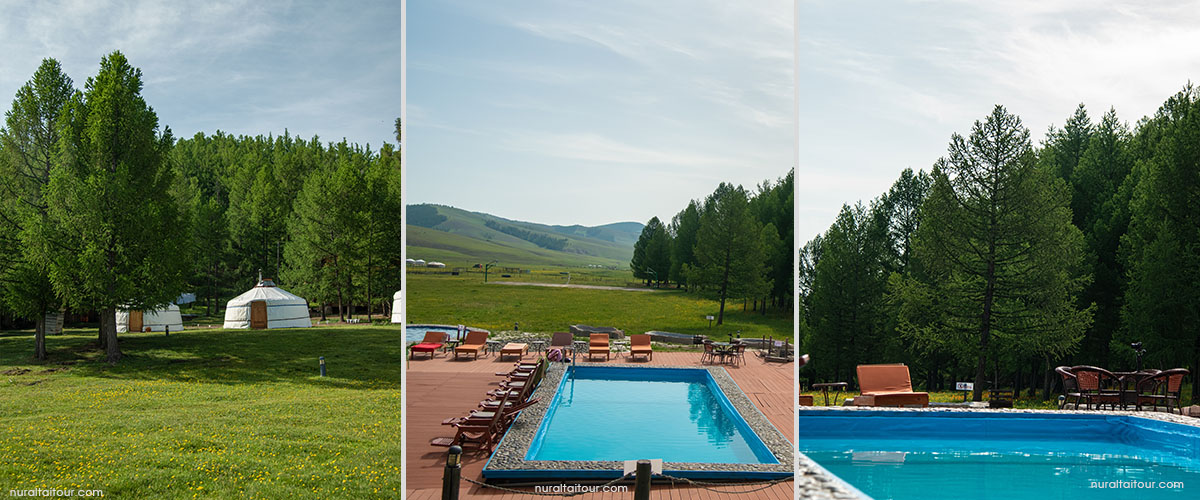
We’ll drive to Kharkhorin for about 2 hours through the heart of Orkhon Valley, known for its rich history and historical treasures. Historically, this region is recognized as the homeland of the ancient Mongolian empire. Kharkhorin, once the illustrious capital of the Mongol Empire, was situated near the enchanting Elsen Tasarkhai. Founded by Genghis Khan in 1220, this ancient city thrived as a political, cultural, and economic hub. It housed the Great Khan’s grand palace and played a pivotal role in trade along the Silk Road. Erdenezuu Monastery, established in 1586, was constructed upon the ruins of Kharkhorin, preserving the city’s spiritual essence. It became a significant center of Buddhism in Mongolia, boasting remarkable architecture and housing precious religious relics. Despite periods of religious suppression, Erdenezuu endured the test of time. After the decline of the Mongol Empire, Kharkhorin faced a somber fate, suffering destruction at the hands of invading armies and the passage of time. While its former glory now lies in ruins, its historical significance remains palpable.
You’ll explore Erdenezuu Monastery and the Kharkhorin Museum, delving into the clear history of the Mongol Empire from the Bronze Age. Overnight in a tourist Ger camp.(B/L/D)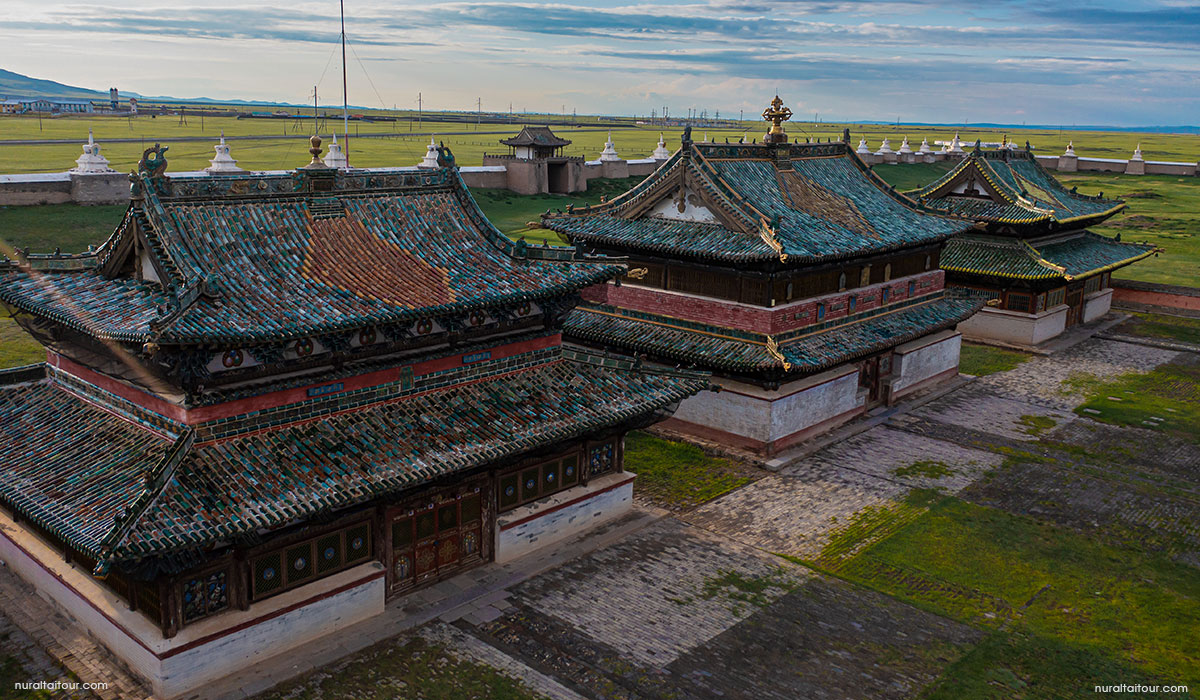
We’ll depart from Kharkhorin in the morning and drive to Khustai National Park for about 3-4 hours, arriving at noon. Known for its successful reintroduction of Przewalski’s horse, also known as the Mongolian wild horse or Takhi, into its native habitat, Khustai National Park boasts diverse landscapes including vast grasslands, rolling hills, and rocky outcrops. These provide habitats for various wildlife species such as deer, marmots, and more, in addition to wild horses. Visitors can enjoy wildlife viewing, hiking, and learning about conservation efforts in this beautiful protected area. Afterward, we’ll return to Ulaanbaatar on a paved road for 100km.(B/L)
You’ll picked up from your accommodation and will make your way to the Genghis Khan Statue about 1 hour. The Genghis Khan Equestrian Statue, part of the Genghis Khan Statue Complex, stands at a towering 40 meters, making it the world’s tallest equestrian statue. Visitors can walk through the horse’s chest and neck to reach the head, offering a breathtaking panoramic view. Additionally, we’ll visit the small museum downstairs to learn about the history of the Ancient Mongol Empire.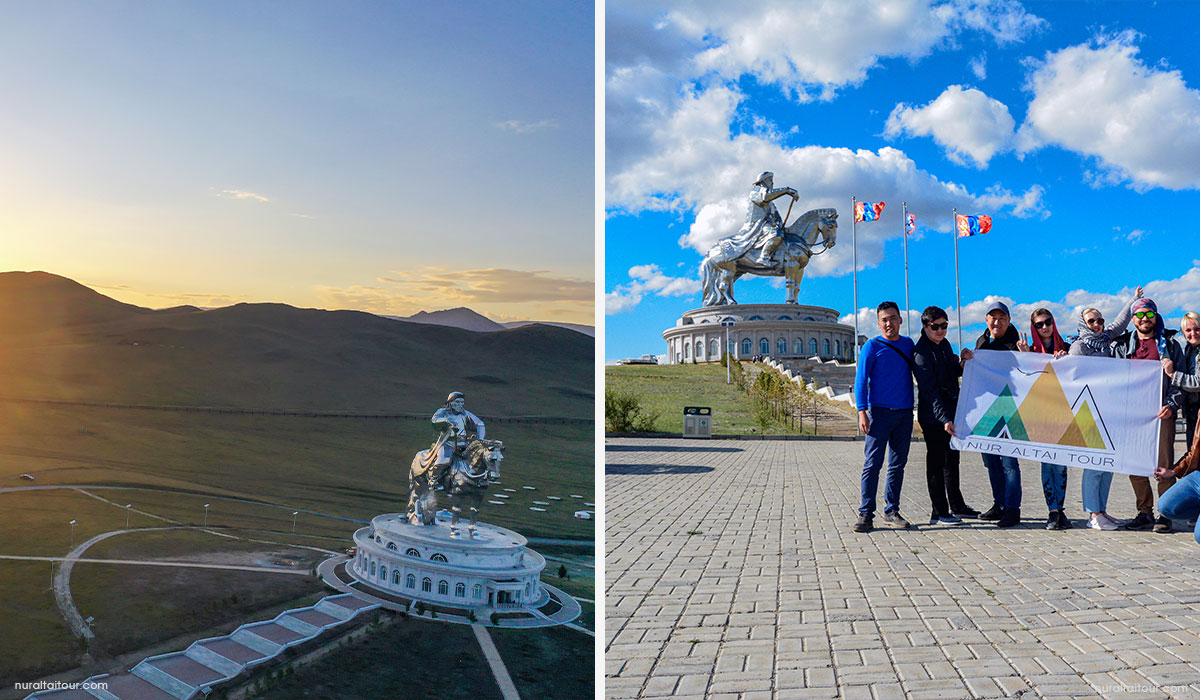 Afterward, we’ll drive to the nearby Gorkhi Terelj National Park where we explore the Turtle Rock and Ariabal Monastery. Unlike the nearby steppes, this area boasts mountains and trees, with large stands of tamaracks that turn golden in the fall. The park features a stunning alpine landscape, numerous rock formations for rock climbers, and includes a well-known landmark called Turtle Rock (Melkhii Khad) due to its turtle-like shape. Renowned as a sightseeing destination, this gigantic rock formation, sculpted solely by wind and rainwater, sits just off the main road into the park.
Afterward, we’ll drive to the nearby Gorkhi Terelj National Park where we explore the Turtle Rock and Ariabal Monastery. Unlike the nearby steppes, this area boasts mountains and trees, with large stands of tamaracks that turn golden in the fall. The park features a stunning alpine landscape, numerous rock formations for rock climbers, and includes a well-known landmark called Turtle Rock (Melkhii Khad) due to its turtle-like shape. Renowned as a sightseeing destination, this gigantic rock formation, sculpted solely by wind and rainwater, sits just off the main road into the park.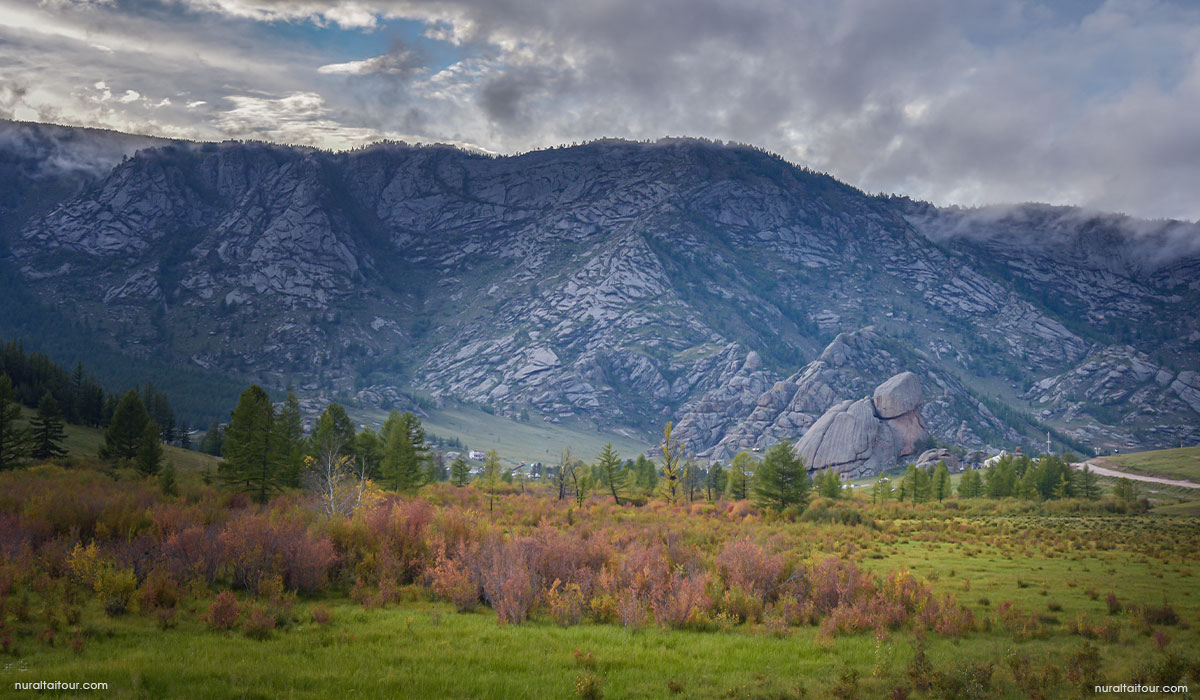 Located on the hillside of a mountain covered with larches and granite rock, the temple offers a serene setting for visitors. On the path to the temple, you’ll cross a small wooden bridge marked with a sign that reads “the bridge that leads beyond wisdom.” The main temple is dedicated to the Kalachakra philosophy, often referred to as the “wheel of time.” Inside, you’ll find a thangka depicting the myth of Shambhala, a Kalachakra mandala, and various artifacts associated with this belief. On the ground floor of the temple, there’s a “gallery of Buddhist philosophy” featuring 220 original paintings by the artist Bayantsagaan, each representing different Buddhist beliefs and philosophies. Perched atop the hill overlooking the temple is a new Buddha sculpture carved into the rock. At the summit of the cliffs, there’s a meditation hut for those seeking solace and contemplation. When you climb up to the temple you’ll have a picturesque view of the national park from its summit.
Located on the hillside of a mountain covered with larches and granite rock, the temple offers a serene setting for visitors. On the path to the temple, you’ll cross a small wooden bridge marked with a sign that reads “the bridge that leads beyond wisdom.” The main temple is dedicated to the Kalachakra philosophy, often referred to as the “wheel of time.” Inside, you’ll find a thangka depicting the myth of Shambhala, a Kalachakra mandala, and various artifacts associated with this belief. On the ground floor of the temple, there’s a “gallery of Buddhist philosophy” featuring 220 original paintings by the artist Bayantsagaan, each representing different Buddhist beliefs and philosophies. Perched atop the hill overlooking the temple is a new Buddha sculpture carved into the rock. At the summit of the cliffs, there’s a meditation hut for those seeking solace and contemplation. When you climb up to the temple you’ll have a picturesque view of the national park from its summit.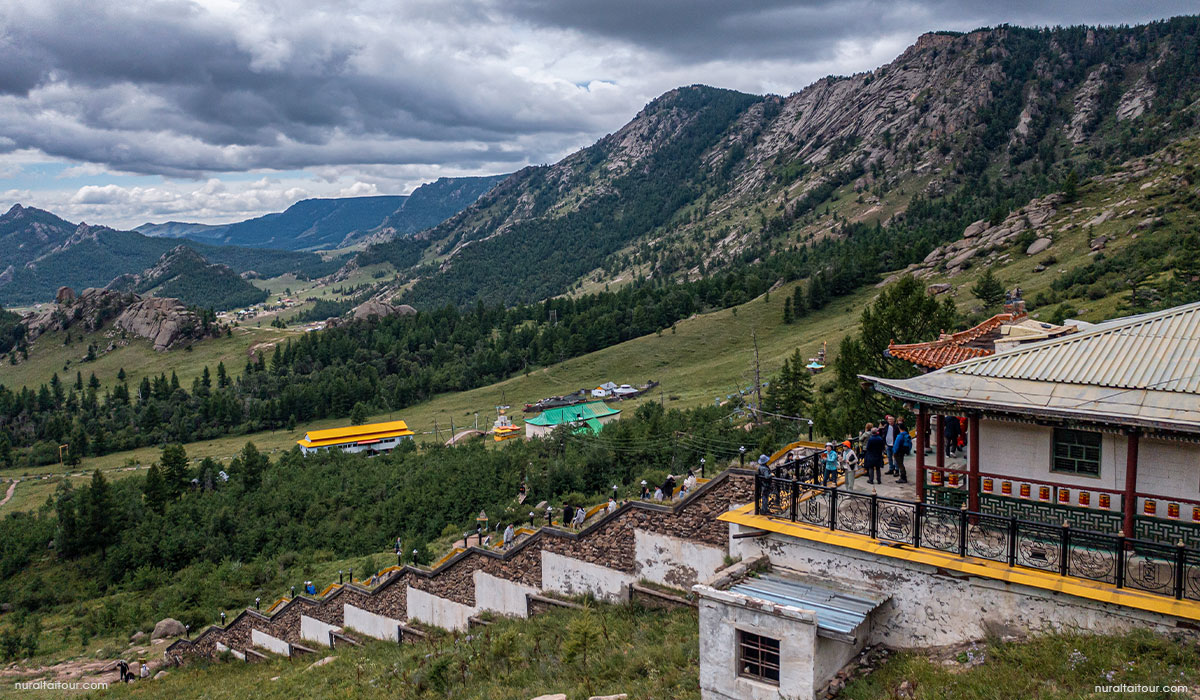 Then, you’ll drive back to Ulaanbaatar for about 1-2 hours, depending on evening traffic.(B/L)
Then, you’ll drive back to Ulaanbaatar for about 1-2 hours, depending on evening traffic.(B/L)
Our driver will pick you up from your accommodation and take you to Chinggis Khan International Airport. We’ll bid you farewell, hoping that we were able to be a part of your unforgettable vacation and add some color to your life.(B)

nur altai tour
Hey, this is Nur. Please, leave your message. We'll answer your questions ASAP.
Any quick questions related to Mongolian Flavor Journey – Gobi Desert & Naadam Festival in Central Mongolia?
WhatsApp Us
🟢 Online | Privacy policy
